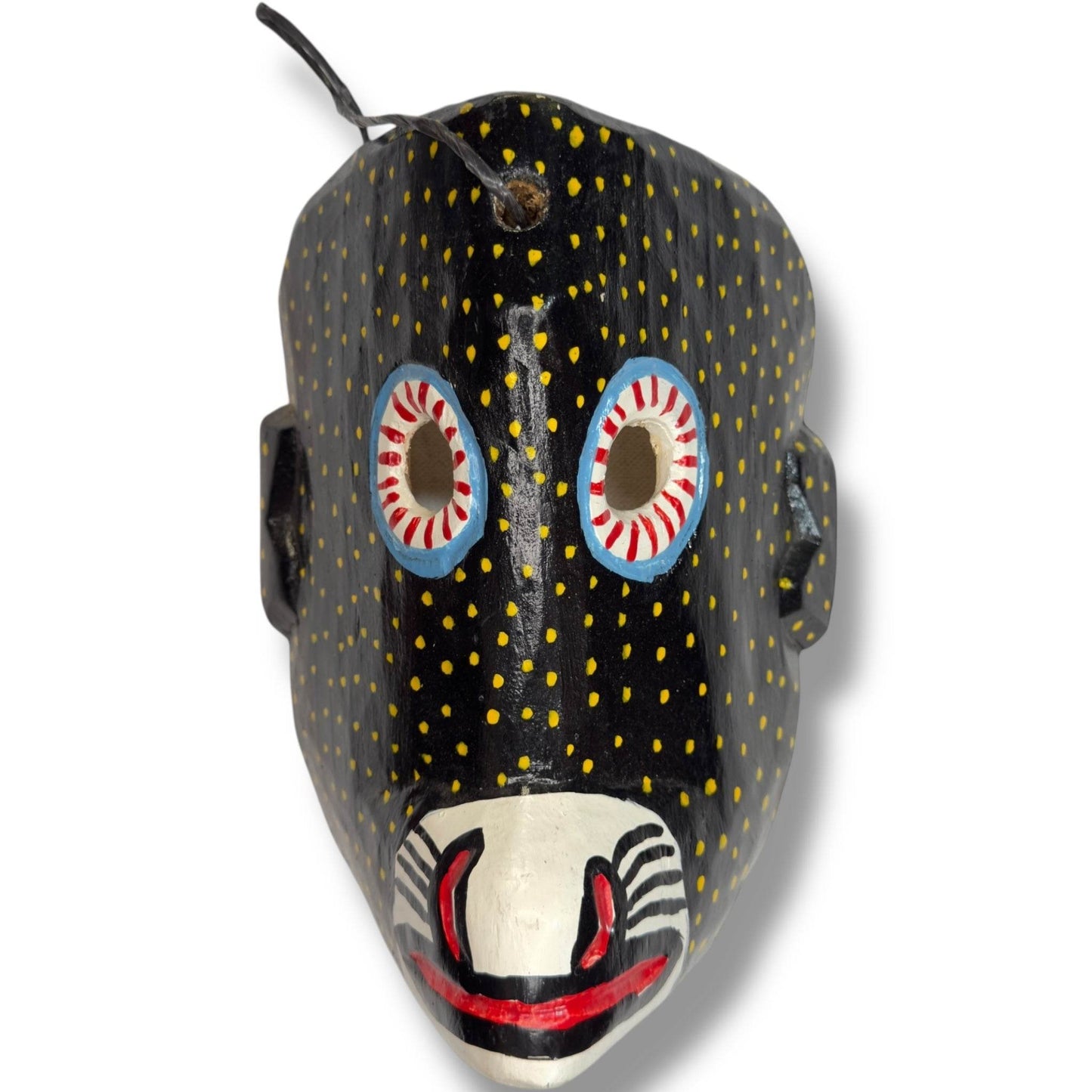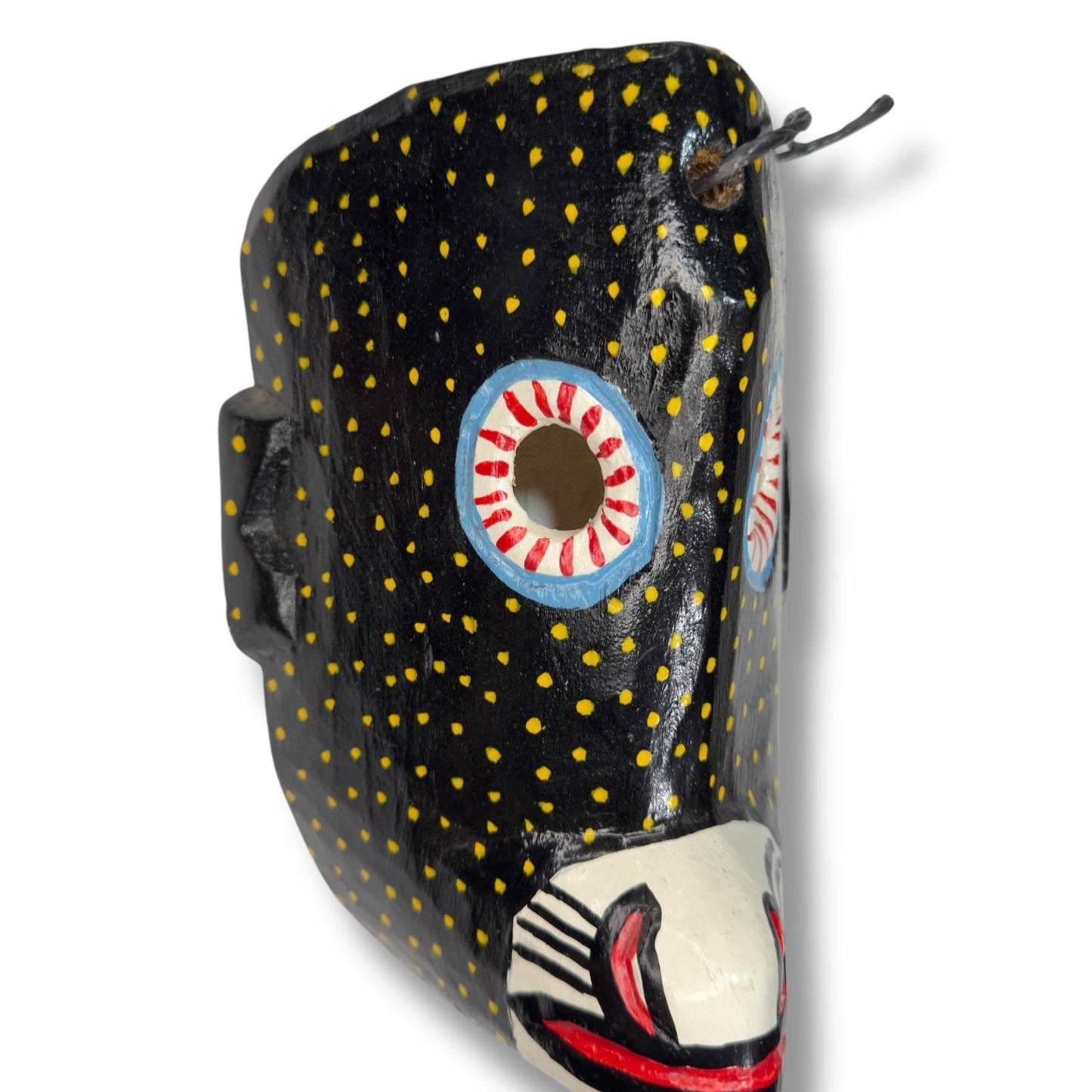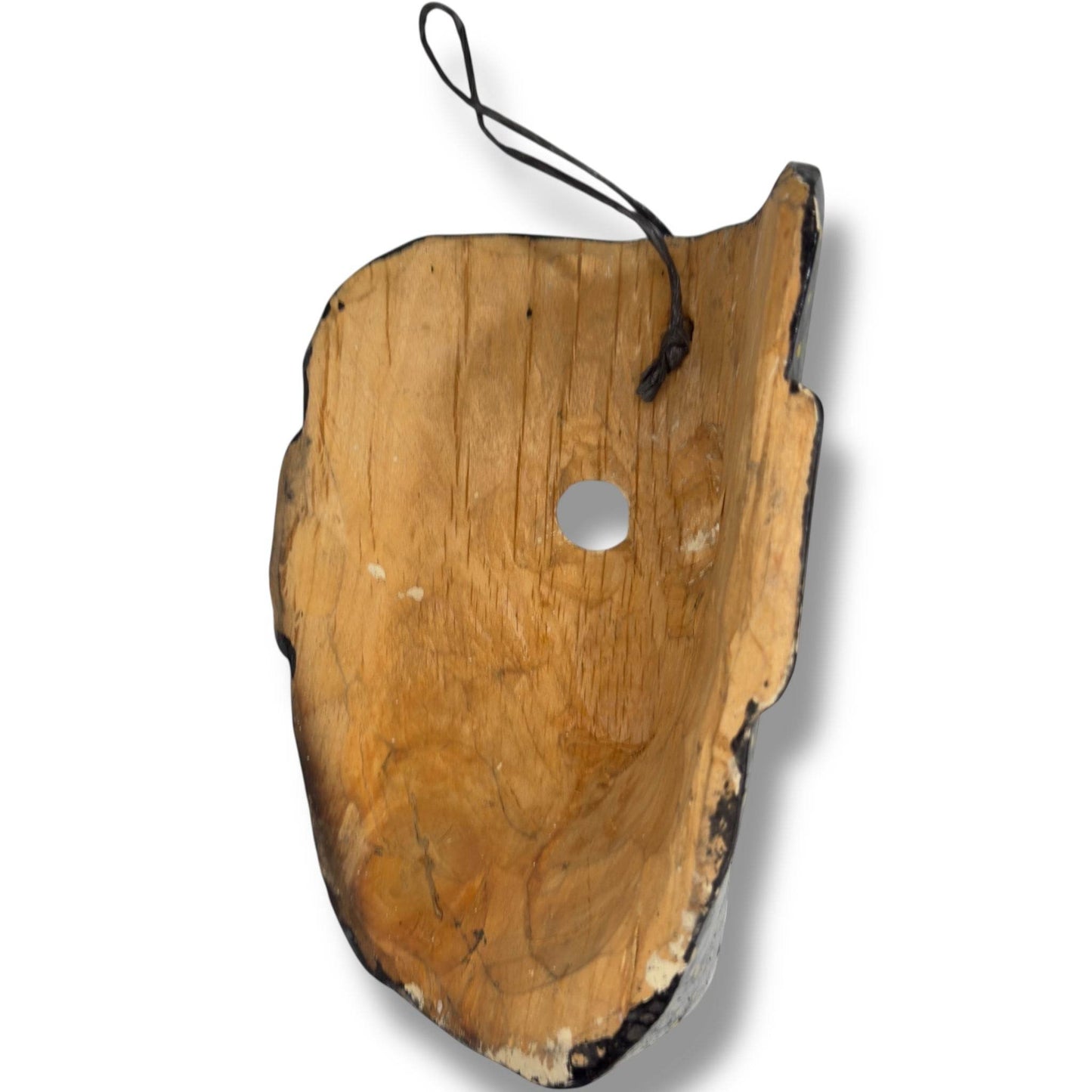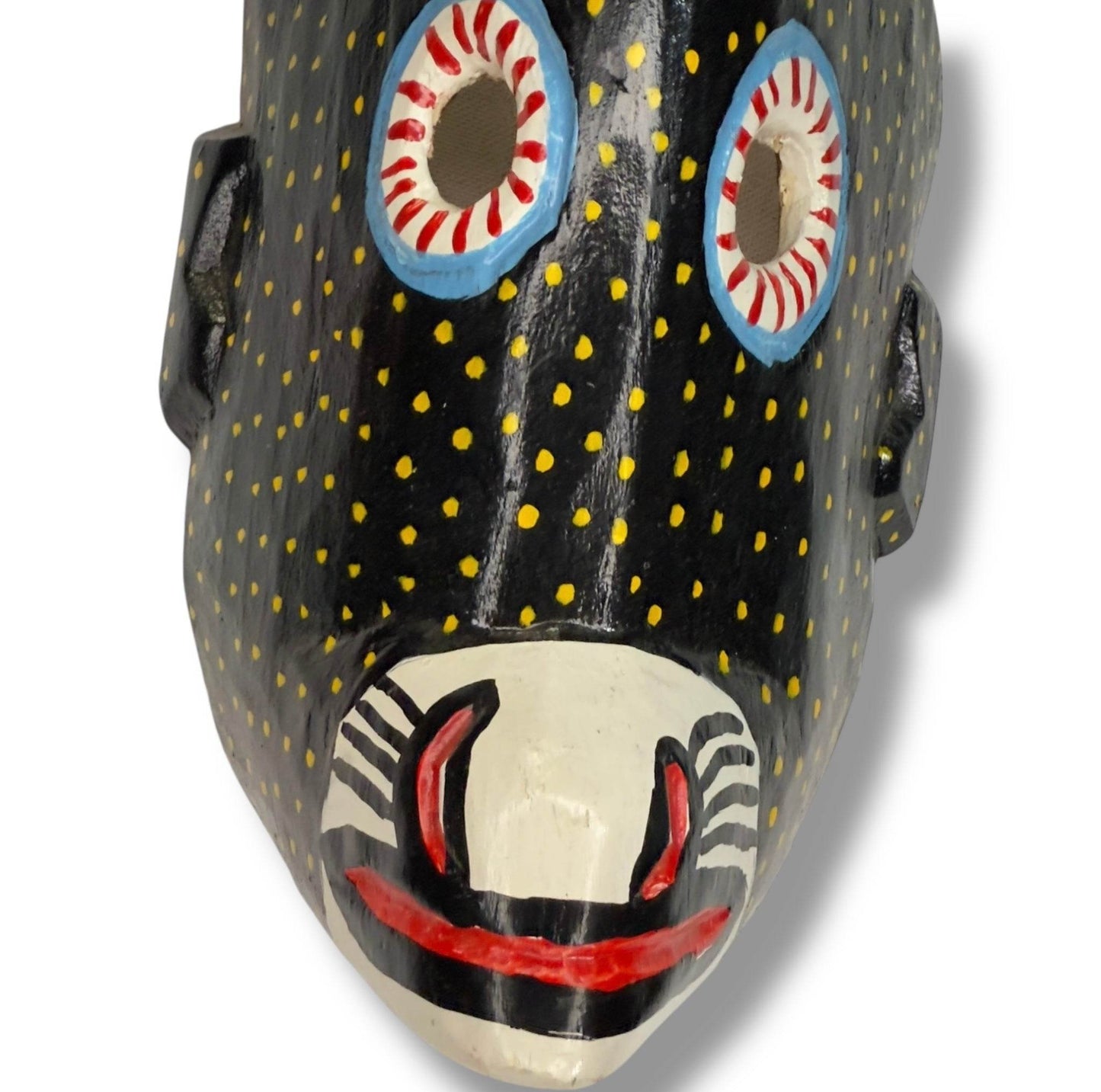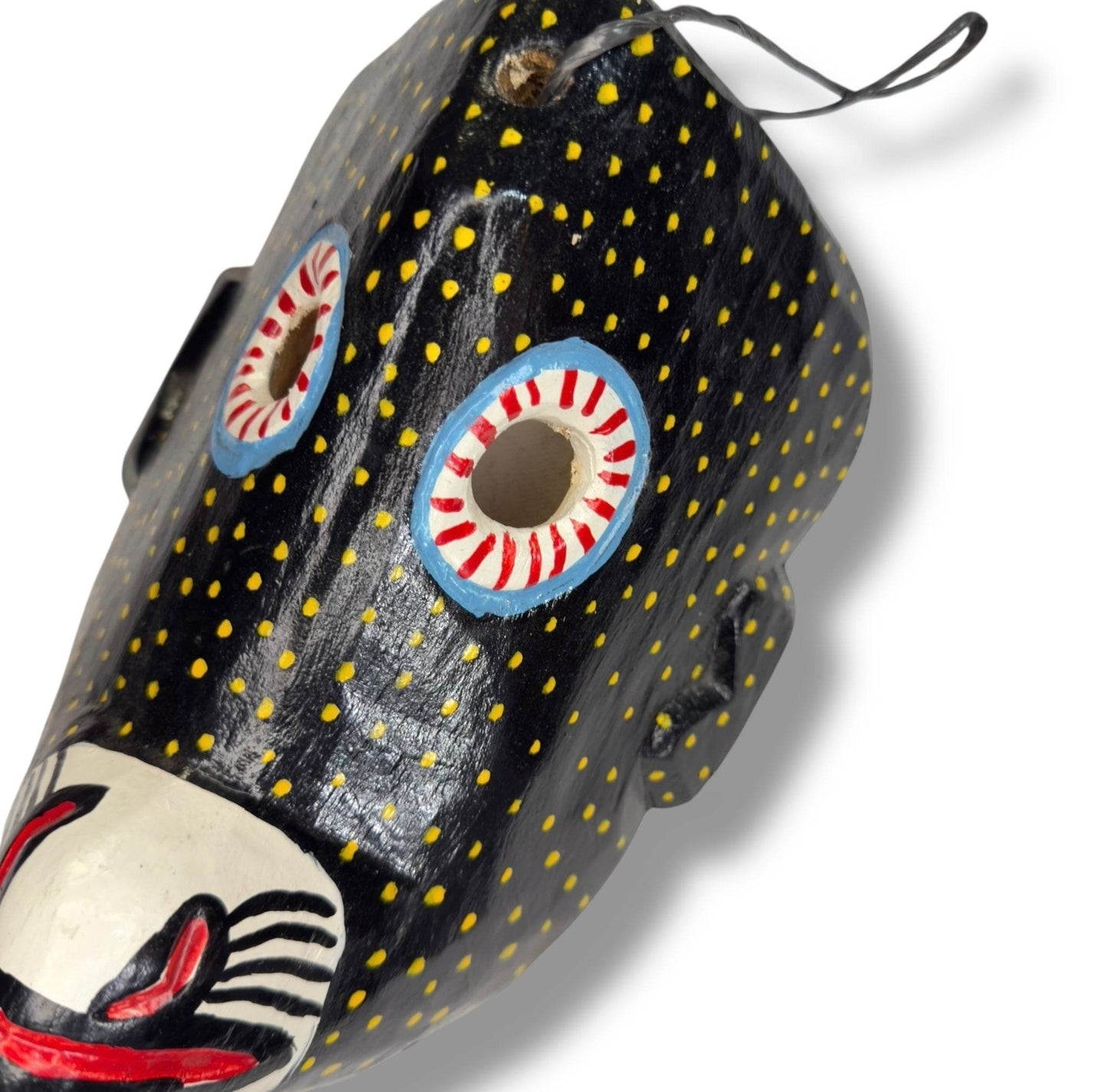Vintage Tapir Mask
Vintage Tapir Mask
★★★★★ Rated 5/5 by collectors
Low stock: 1 left
Couldn't load pickup availability
One Day Fulfillment and Fast shipping from New Mexico • Secure checkout.
Share
📜 Customer Commitment – All items are eligible for return or exchange within 14 days under our official policy.
🦙 From The Andes has been curating rare finds since 1987, family-run in Taos, New Mexico.
Specifications
- Artist: AJ Canil Family
- Origin: Chichicastenango, Quiché Highlands, Guatemala
- Material: Hand carved wood with polychrome paint
- Design: Elongated snout with painted nostrils, dotted black body, and small mouth opening
- Palette: Black ground with yellow dots, white muzzle, red and black mouth details
- Vision: Large perforated eye openings outlined in red
- Interior: Raw carved wood with visible tool marks
- Hanger: Cord loop attached at the crown
- Estimated date: Mid-20th century (c. 1940s–1970s)
- Condition: Surface wear, paint loss, and patina consistent with vintage workshop use. See photos for exact condition
Catalogue Note
This mask represents a tapir, a distinctive long-snouted animal that appears in highland festival dramas. The elongated, toothless muzzle, spotted paintwork, and strong profile distinguish it from jaguars, canines, or deer. The dotted black ground adds stage visibility, a technique used by Chichicastenango carvers to exaggerate animal presence in performance.
Tapir masks belong to the broader repertoire of animal figures in the Baile de los Animales, where performers embody creatures that reflect humor, chaos, and the interconnection between people and the natural world. This example, with its patterned body and stretched snout, reflects mid-20th century workshop production rented through local morerías for village fiestas.
Key Highlights
- Authentic Guatemalan tapir mask from the Quiché Highlands
- Long, toothless snout with painted nostrils and spotted body design
- Painted black with yellow dots, red eye rims, and white muzzle
- Attributed to mid-20th century Chichicastenango workshop production
- Festival mask connected to the animal roles in highland dance traditions
Display and Care
- Indoor display recommended
- Avoid direct sunlight and high humidity
- Dust with a dry soft brush only
Attribution and Condition Notes
Attributed to the Chichicastenango trade orbit based on carving style, palette, and elongated snout form. Surface wear and aging are consistent with vintage folk art. No structural losses noted at inspection. See photos for exact condition.
FAQ
What does this mask represent? It represents a tapir, one of the long-snouted animals portrayed in the Baile de los Animales, where performers embody local wildlife.
Is this an authentic Guatemalan festival mask? Yes. The carving, paintwork, and construction align with mid-20th century Chichicastenango workshop traditions.
Can it hang on a wall? Yes. A cord hanger is present. Use a secure support for safe display.
